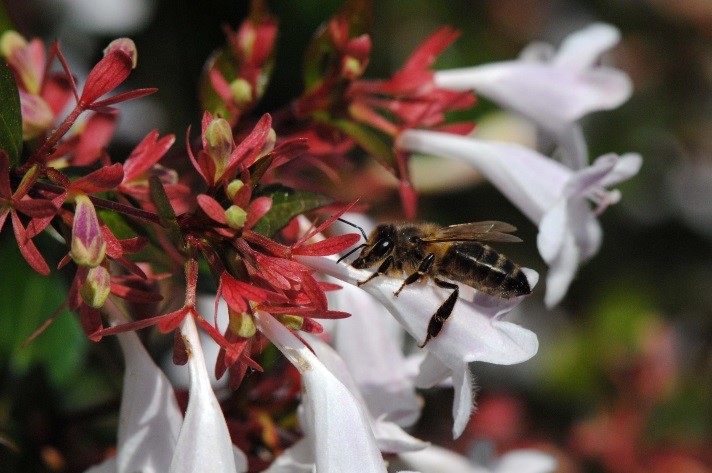Many pollinators are under threat – not just our beloved honey bees.
There are plenty of things we can do to help them. Here are some key pointers for turning your garden into a pollinator’s paradise. Let’s start with year-round plants for pollinators:
JanuaryMahonia x media ‘Charity’.
Mahonia |
FebruaryCamellia “Yuletide”, Salix (Willow) many species, Sarcocca (Christmas Box).
Sarcocca |
MarchAlnus cordata (Alder), Alnus incana (Alder), Corylus avellana (Cobnut), Corylus maxima (Filbert),Prunus cerasifera (Cherry plum) Ribes (Flowering Currant).
Ribes |
AprilAcer negundo (Ash leaved maple), Acer macrophyllum (Oregon maple), Amelanchier lamarckii (June berry), Berberis many species, Cercis siliquastrum (Judas Tree), Cydonia oblonga (Quince),Malus sylvestris (Apple Tree), Prunus (Flowering Cherry) many species.
Berberis
Apple Blossom |
MayCistus many species, Crataegus monogyna (Common Hawthorn), Crataegus laevigata (May Tree),Ilex (Holly)many species, Mespilus germanica (Medlar), Sorbus (Rowan).
Cistus |
JuneLavandula (Lavender), Liriodendron tulipifera (Tulip Tree), Robinia pseudoacacia (False Acacia),Robinia hispida (Rose Acacia), Tilia europaea (Common Lime).
|
JulyAilanthus altissima (Tree of Heaven), Buddleia (Butterfly Bush) various species, Tilia tomentosa (European White Lime).
Buddleia (with butterfly) |
AugustAbelia x grandiflora, Catalpa bignoniodes (Indian Bean Tree), Koelreuteria paniculata (Golden Rain Tree).
Abelia grandiflora |
SeptemberTamarix ramosissima (Pink Cascade).
Tamarix ramosissima |
OctoberHedera (Ivy), Tetradium daniellii (Evodia).
Ivy Flower (with wasp) |
DecemberPrunus subhirtella “Autumnalis” this flowers on and off from late November until March.
Prunus subhirtella autmnalis |
Some Easy Wins
No pesticide or herbicide use |
Let garden have wild, overgrown areas |
 |
 |
Create mini meadow with paths through & reduce lawn mowing |
Create a small pond |
 |
 |











